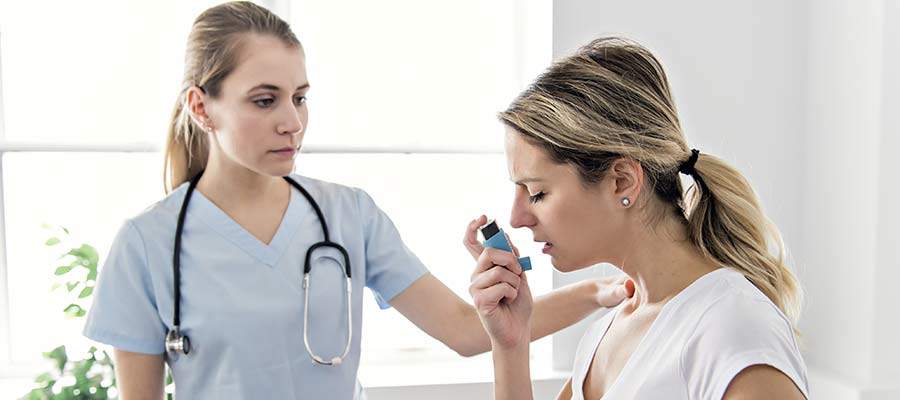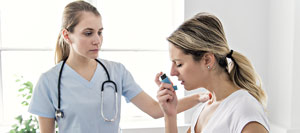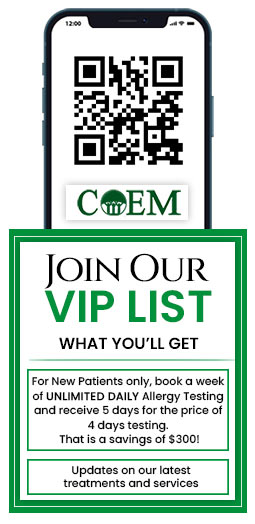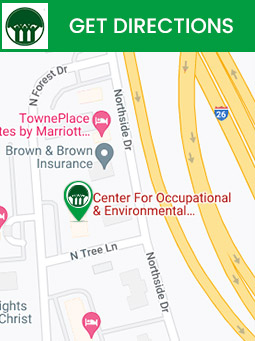Mold and Asthma – What’s the Connection and its Effects on Your Health by COEM in Charleston SC
Inhaling mold spores can trigger or worsen your asthmatic symptoms. Some common asthmatic symptoms triggered by mold include coughing, wheezing, chest tightness, and shortness of breath. Get comprehensive and specialized care at The Center for Occupational and Environmental Medicine (COEM). For more information, contact us today or schedule an appointment online. We are conveniently located at 7510 North Forest Drive North Charleston, SC 29420.


Table of Contents:
How does mold affect your asthma?
Can mold cause breathing problems?
How do you recognize a mold induced sickness?
What symptoms indicate a mold infection in your lungs?
Mold allergy causes
Complications associated with mold sickness
How do doctors diagnose mold allergy?
How to reduce exposure to mold
How do you treat mold sickness?
When exposed to mold, people with asthma suffer from shortness of breath and overall reduced lung function. When mold is inhaled, their airways produce more mucus, may constrict, and become swollen. Due to this, the patient may experience shortness of breath, chest tightness, wheezing, or coughing. These reactions can be fatal at times and require a hospital visit.
Yes. Touching or inhaling mold spores can cause several allergic reactions like a runny nose, sneezing, skin rash, and red eyes. In more severe allergies, people can face shortness of breath. If the patient is asthmatic, mold exposure can also trigger asthma attacks.
Among hundreds of mold species identified, some can make you sick. No species of mold are completely safe when inhaled. Some common mold exposure symptoms are headache, runny nose, sore throat, sneezing, coughing, fatigue, and watery eyes. The symptoms worsen if the patient has allergies, respiratory problems, or a compromised immune system.
Mold infection in your lungs can show several symptoms that can range from mild to severe, depending on the type of exposure. In the early stages, pulmonary aspergillosis might not cause any symptoms. However, the progress of the disease may trigger symptoms like fever, wheezing, chest pain, breathing problems, and coughing, which can sometimes be accompanied by blood or mucus.
Like any other allergy you experience, mold allergy symptoms are also triggered by an extremely sensitive immune system. When you get exposed to small airborne mold spores and inhale them, your body recognizes them as foreign substances and develops allergy-causing antibodies to combat them. Once the exposure subsides, you still produce antibodies that remember this invader. Therefore, any future contact with the mold triggers a similar response.
Some of the allergic conditions due to mold are more severe. These include:
• Mold-induced asthma: In people with a mold allergy, inhaling mold spores can cause asthma.
• Allergic fungal sinusitis: This sinus infection is triggered by an inflammatory reaction to fungus in the sinuses.
• Allergic bronchopulmonary aspergillosis: This disease is characterized by inflammatory lung damage and is often common in patients having cystic fibrosis or asthma.
• Hypersensitivity pneumonitis: This rare condition occurs due to inflammation in the lungs caused by exposure to airborne mold spores. It can cause swelling in your air sacs and makes oxygen difficult to reach your bloodstream.
If the doctor suspects a mold allergy, they generally conduct skin tests or allergen-specific blood tests. They analyze the physical exam, patient’s medical history, and skin testing results to diagnose a mold allergy.
The best way to stay safe is to avoid mold exposure as far as possible. Here are some steps to prevent mold exposure.
Avoid overwatering the plants.
• Keep bathrooms and basements uncarpeted.
• Get the carpets and upholstery professionally cleaned if they have mold.
• Maintain the ventilation systems properly.
• Use exhaust fans for rooms that get too humid.
• Limit or discontinue the use of humidifiers and vaporizers to keep the humidity levels under 50%.
Treatment for mold allergies includes using:
• Nasal sprays or rinses.
• OTC medications
• Montelukast (Singulair).
• Allergy shots.
If you are looking for doctors specializing in mold illness treatment, call us or schedule an appointment today with our experts. Talk to our experts to know more about the dangers of asthma and mold exposure. We serve patients from Charleston, Mt. Pleasant, Summerville, North Charleston SC, Ladson SC, Hanahan SC, James Island SC, John’s Island SC, Daniel Island SC, all of South Carolina, Nationally, and Internationally. Patients routinely fly into Charleston to be evaluated by COEM and to enjoy this beautiful city which is a Condé Nast and Travel and Leisure Top Domestic and International Tourist Destination.










